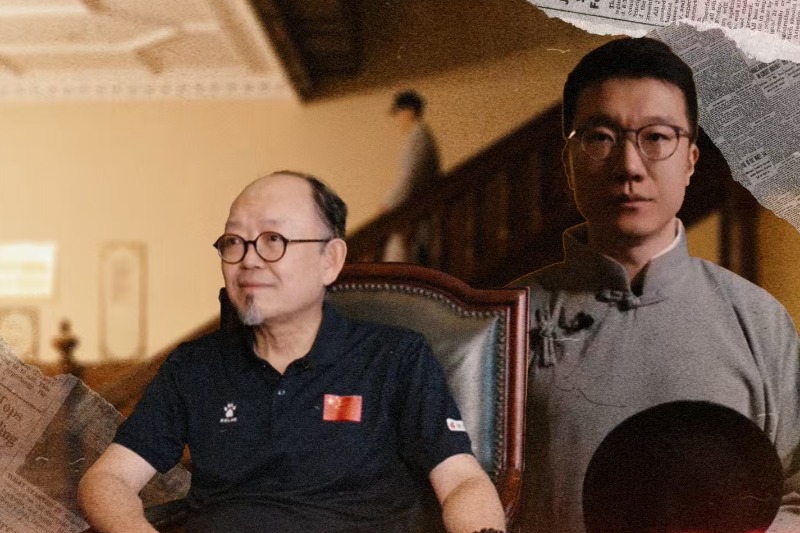Timeless ethnic ideas feed fashion needs today
Designer puts spotlight on cultural gems from past, Zheng Wanyin reports in Dusseldorf, Germany.


What is it like to dance with tens of thousands of people to the same rhythm?
The Munao Zongge Festival, celebrated by China's Jingpo ethnic group in the southwestern province of Yunnan, offers a glimpse into such a thing, with crowds of people dancing together for four consecutive days every year.
Back when humans were still far from fully knowing the science of cosmology, the Jingpo people first danced to worship the sun god.
The sun deity, they believed, invited all living creatures on Earth to a grand feast, and, according to the myth, the hornbills were appointed as the ambassadors of Earth. In the palace of the sun, birds and gods danced tirelessly, eventually passing the sacred movements down to humankind.
That euphoric dancing, with its sense of freedom and spontaneity, drawn from the Jingo legend, was the inspiration behind Chinese designer Liu Qiongying's Fall/Winter 2025 collection, which was unveiled on July 19 during Dusseldorf Fashion Days, or DFD.
The gathering, which ran from July 16 to July 23, featured open-air runway shows and trade shows and utilized more than 600 showrooms across the German city.
Dusseldorf, which is the capital city of Germany's most populous state, North Rhine-Westphalia, also considers itself the country's fashion capital, and its faith in the fashion businesses, from buying to merchandising, dates back to 1949 when the first fashion sales week landed there and took hold.
Fashion bloggers and loyal customers filled the front rows to see how Liu's brand — Sheme, which was the only Chinese brand invited to the DFD runway show — would perform.

The collection's "Rhythmic" series used black to reflect the quiet strength of the natural land. The "Fairy" series made use of embroidered plumes and pearls on white uppers that symbolized the grace of birds from the legend, flapping their wings in dance. The bold red of the "Ceremony" series was all about the electric energy that the Munao Zongge Festival has inherited.
"The shoes are art. They are really art," said Kati Schoen, a German jewelry designer. "I was very impressed by the details of the shoes inspired by Chinese culture. They all have meanings."
Ingnahl Magadan, a Dusseldorf-based conceptual artist who owns at least 15 pairs of shoes from Sheme, highlighted not only their craftsmanship but also their comfort.
"You might never think you could walk in those high heels, but once you slip them on, they are fabulous, and that is the mark of true refinement," Magadan said.
The fresh release that shed light on Jingpo mythology was just one part of Liu's ambitious plan to feature all 56 of China's ethnic groups in her designs.

The turning point came in 2021, during an interview, when the story of one of Sheme's embroiderers from China's Qiang ethnic group, whose life had been flipped for the better since joining the brand in 2011, sparked the project, Liu said.
The embroiderer had moved to Longquan, in eastern Zhejiang province, where Sheme is based, along with her two children. Through years of hard work, she was able to send them to better schools, and one is now studying nursery education and the other architectural design, Liu said.
"The whole family, coming from a small village in a remote area, now lives a more decent life. That prompted me to think, why not dream even bigger," Liu said. "So, starting in 2021, we planned a 28-year journey to honor all 56 of China's ethnic groups, dedicating each collection to one ethnic group. In a way, the brand cannot only continue creating designs that inherit Chinese culture but also support ethnic minorities by getting the world to truly know these artisans."





































